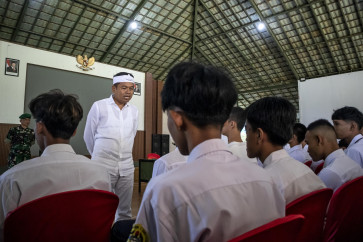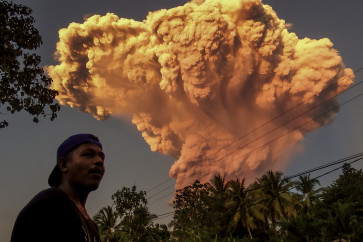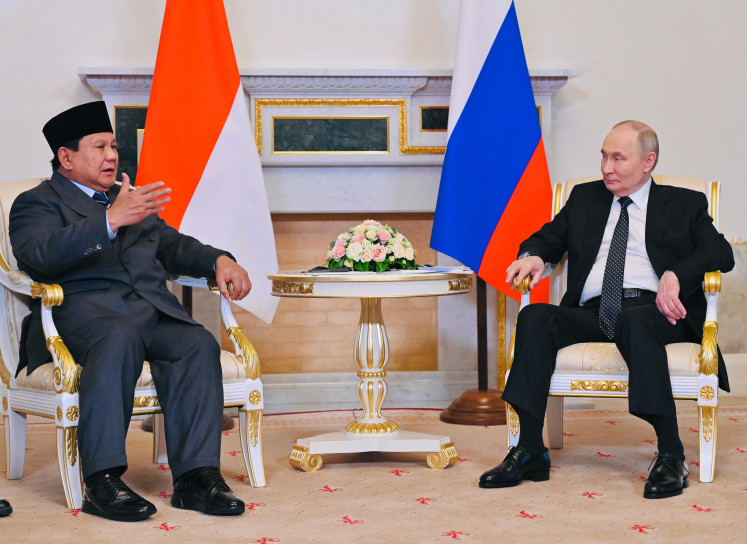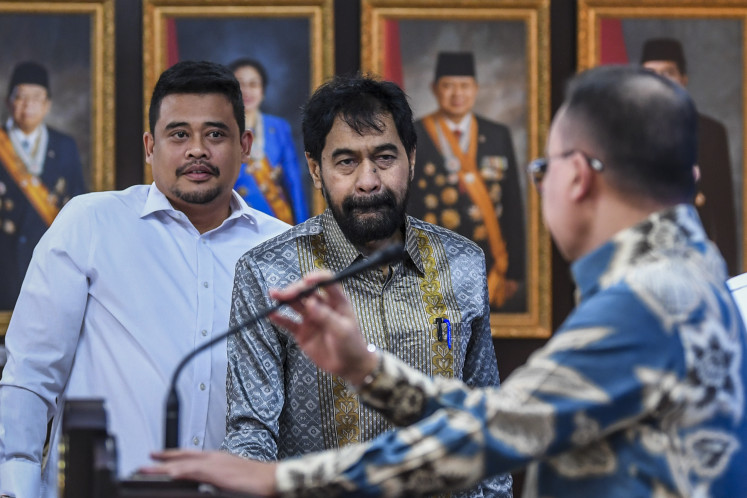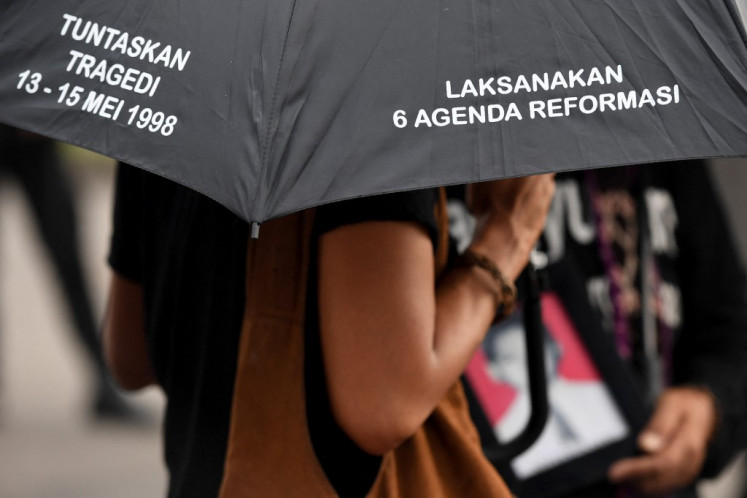Popular Reads
Top Results
Can't find what you're looking for?
View all search resultsPopular Reads
Top Results
Can't find what you're looking for?
View all search resultsAli Sastroamidjojo's bungalow: Nothing remains of venue that once saw fiery debates
All gone: Wisma Siliwangi was one of the buildings used to host state delegates during the 1955 event
Change text size
Gift Premium Articles
to Anyone

A
span class="caption">All gone: Wisma Siliwangi was one of the buildings used to host state delegates during the 1955 event. The building was torn down in the early 2000s and the empty plot of land is being attended by Sawu Abbas Saputra (below right). JP/Arya Dipa
Sawu Abbas Saputra, 76, was on the alert. Hiding behind the bushes, he peered at this reporter, who had tried to peek through the fence surrounding the 800-square-meter estate in the resort area of Ciumbuleuit, Bandung, West Java.
The modest old man from Klaten, Central Java, is the caretaker of the land, which is thought to be the subject of a prolonged ownership dispute.
But he was happy to tell The Jakarta Post that the bungalow that used to stand on the plot of land was where Indonesia's then prime minister Ali Sastroamidjojo had stayed during the 1955 Asian-African Conference. The building was destroyed in the early 2000s.
'I remember that some meetings related to the conference were held in the building that used to stand here,' he told the Post eagerly.
According to Sawu, then president Sukarno often spent holidays in the bungalow, which was known as Wisma Siliwangi back in the 1960s. 'Sukarno frequently invited traditional dancers to perform here,' he said, standing on a semi-circular terrace covered with soil and small trees.
Before it was torn down, the bungalow was also frequently used by locals to perform prayers during Idul Fitri.
Sawu's confirmation strengthened the previous information obtained by the Post from a few elderly locals about the location of the bungalow. It was not easy to trace the land where the bungalow used to stand because the Ciumbuleuit area has been home to any number of luxury bungalows, which were used by state leaders attending the 1955 conference.
According to a witness to the Bandung Conferences, Roeslan Abdulgani, Ali hosted an afternoon-tea meeting for Asian and African leaders on April 17, 1955, one day before the conference officially kicked off.
'The name of the bungalow [at that time] was Berg en Dai, the Dutch for 'mountain and valley',' he said in his book The Bandung Connection.

The meeting turned heated after then Pakistani prime minister M. Ali became furious about decisions made by the leaders earlier that day without his presence. He accused then Indian prime minister Jawaharlal Nehru of twisting other leaders' arms into banning speeches during the conference's opening event.
'With his wisdom, Ali emphasized that the decision was still subject to further discussion in the conference's plenary session,' Roeslan said, adding that the prime minister then managed to calm the situation down, helping settle the dispute the next day.
The land where the building once stood is now full of wild plants, the air thick with the gloom of memories. Mosquitoes attack any intruders, although they seemed to leave Sawu alone.
Even the rubble of the bungalow had been cleared, he said. Very few of the structure's remains are visible following strenuous efforts to clear the scrub and soil. A 2-by-6 meter bunker at the back of the estate still exists.
'That's the only thing that's still intact,' Sawu said, pointing to a giant banyan tree with a trunk diameter of 2 m. Its branches span outward, forming a circle with a diameter reaching 60 m.
'Locals often come to the tree in the middle of the night to pray,' he said, alluding to lingering belief in supernatural powers among the area's people.

